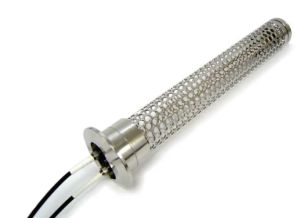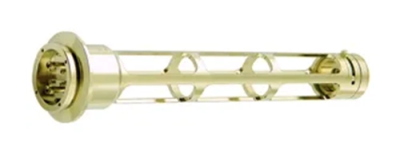The first-generation probe developed for measuring hydrogen peroxide in sterilizers was a single pass 25 cm probe. Later this probe was vented for vacuum use yielding a path length of 28.3 cm. This original design, exposed optics the optics (lenses) to the gases being measured. Since lenses are sensitive to the index of refraction of the surrounding air which is a function of its constituency, in this case varying water and hydrogen peroxide vapor, this resulted in a small but detectable change in the effective focal lengths of the lenses. As a result, baseline shifts could occur, which would decrease the accuracy of the absorption measurements and ultimately causes a small bias in the reported concentration of vaporized hydrogen peroxide during sterilization.
In 2003, the first G-SST vapor probe was developed with a double pass design with a pathlength of 50 cm. The longer pathlength increased the accuracy of the measurement. This probe still exposed the process side of the lenses to the sterilization chamber. Once again, small changes in baseline could be seen as the air pressure and vapor concentrations changed. Furthermore, the lenses were glued into place and after a couple of years of heavy service, the glue degraded due to exposure to hydrogen peroxide, necessitating service.
In 2018, we began a redesign project with the intention of reducing cost and improving the performance and service life of the G-SST probe. We retained the 50 cm folded pathlength, the gold-coated second surface mirror and the high optical efficiency. An O-ring sealed window was added to isolate the optics from the process. These changes removed the index of refraction sensitivity.

